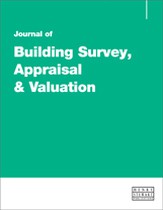Dry rot and timber decay: Don’t panic and poison yourself
Abstract
This paper first shows that timber decay in buildings is primarily due to lack of maintenance and building defects, allowing water penetration into the building fabric providing ideal environmental conditions for fungal and beetle infestation. Secondly, the paper sets out how it is very important that investigations are non-destructive, and result in the correct diagnosis and identification of type and viability of decay. Thirdly the paper discusses the author’s belief that the remedial chemical timber treatments stem from fear and a lack of knowledge of dry rot, and that the demand for 30 year guarantees for treatment results in ‘overkill’. The paper advocates that the environmental control of dry rot and timber decay and preventative maintenance are preferable to conventional remedial treatments. This approach is based on scientific, practical experience and successful case studies carried out over the last 33 years, and provides not only environmentally sustainable holistic conservation solutions, but also ensures the long-term health of building materials, health of the occupants and structures.1
The full article is available to subscribers to the journal.
Author's Biography
Jagjit Singh PhD is a building mycologist and pathologist and a director of Environmental Building Solutions Ltd (EBS). He specialises in building health problems, heritage conservation and environmental issues and has more than 33 years’ hands-on experience in surveying historic buildings. Jagjit has carried out environmental surveys for dry rot, wet rot, moisture, damp and decay, moulds, environmental health surveys and monitoring historic buildings, and provided recommendations for environmental control. EBS’s reputation in non-intrusive investigations for dry rot, wet rot, timber decay, damp, hazardous materials surveys, heritage building investigations and the development of innovative techniques — including recommendations for environmental management sympathetic to the building fabric finishes and components and the non-use of chemicals and cementitious tanking materials — is well respected by conservation and heritage authorities. Jagjit has published in excess of 250 technical papers and communications, contributed to books and lectured widely on care and conservation of collections, building pathology and building health problems, covering wide areas including fungal infestation and environmental control, timber decay in buildings, damp and decay in buildings and drying out buildings after fire and water damage, environmental monitoring and control of moisture, mould and biological contaminants, Indoor air quality and health implications in buildings. Jagjit has edited several books including Building Mycology: Management of Decay and Health in Buildings, Environmental Preservation of Timber in Buildings, Allergy Problems in Buildings and Environmental Monitoring of our Cultural Heritage and Sustainable Conservation Solutions. Jagjit is a BBC expert and has appeared twice in the Raising the Roof series. He is a former president of the International Society for the Built Environment (ISBE).
Citation
Singh, Jagjit (2020, June 1). Dry rot and timber decay: Don’t panic and poison yourself. In the Journal of Building Survey, Appraisal & Valuation, Volume 9, Issue 1. https://doi.org/10.69554/BYCX4751.Publications LLP
